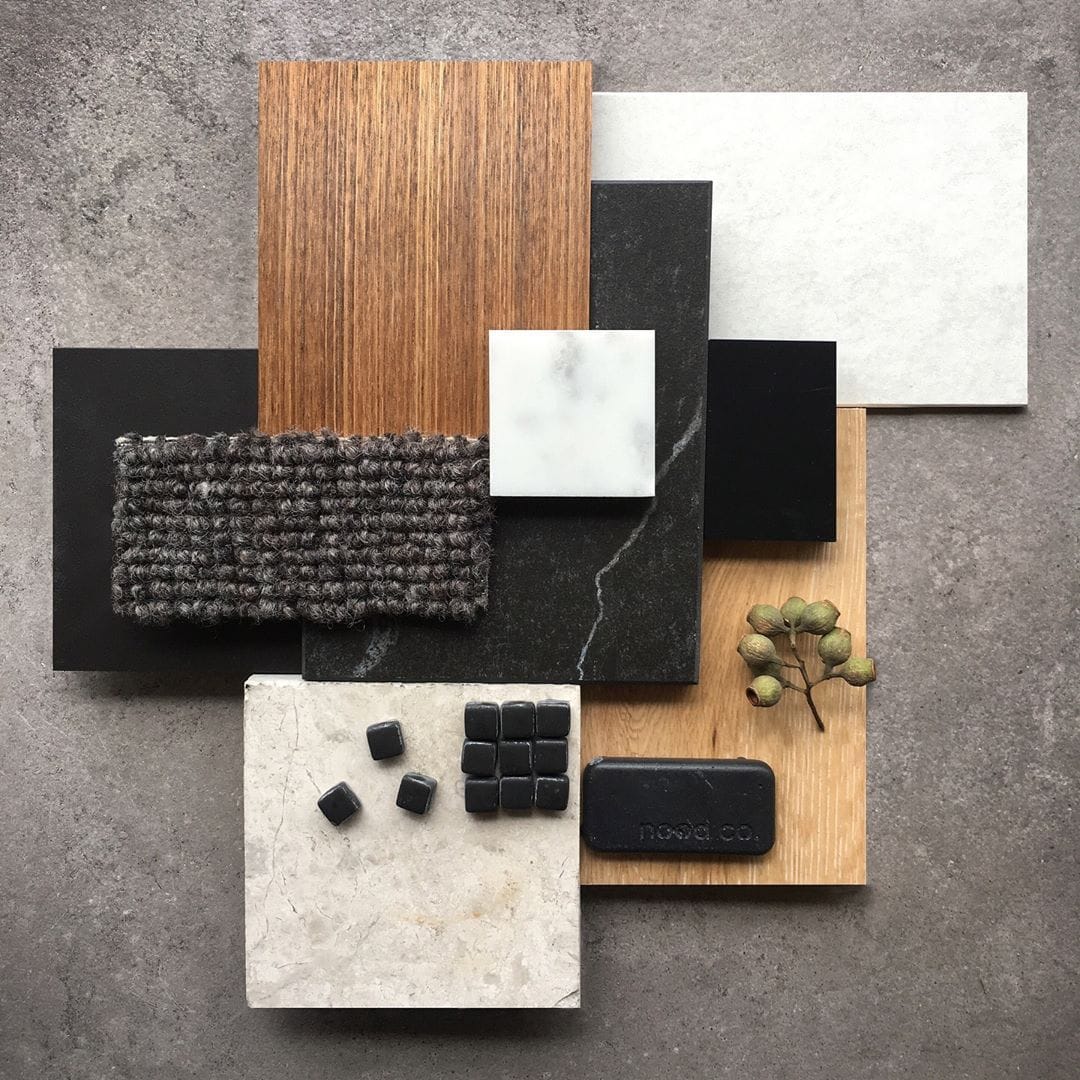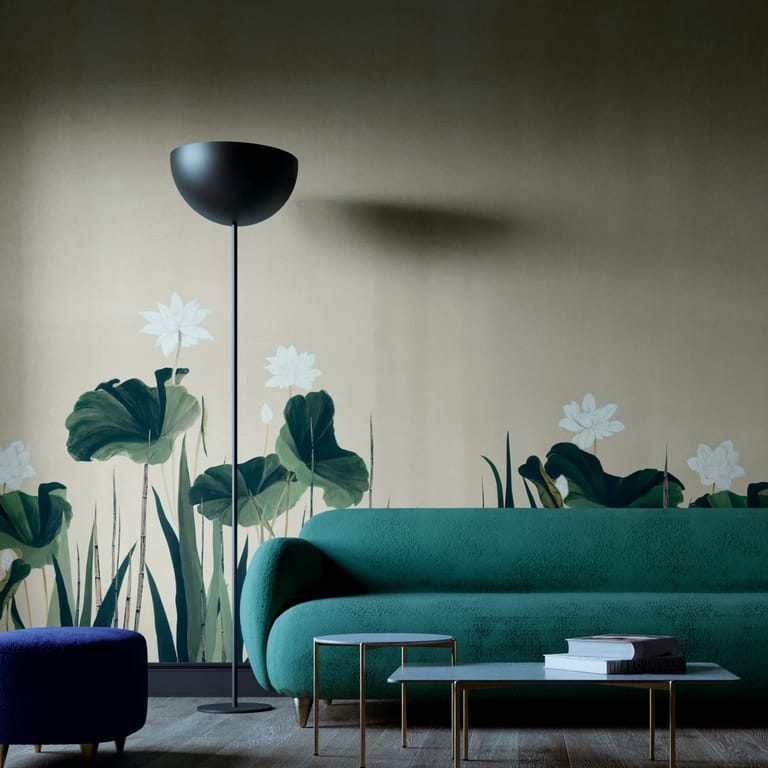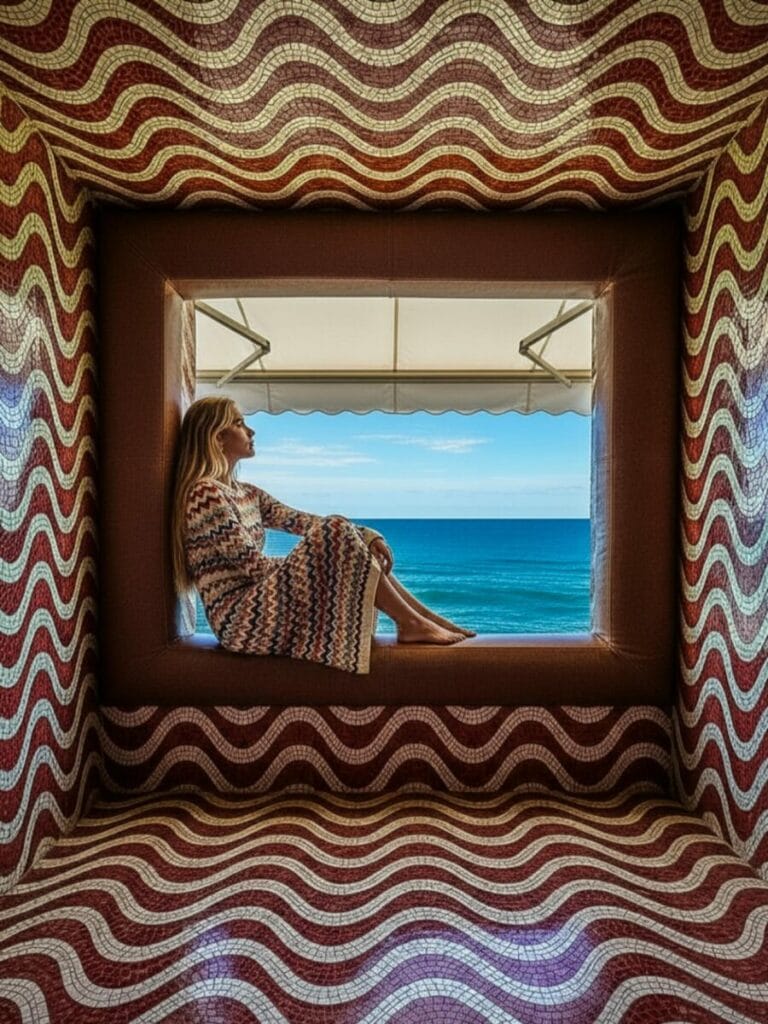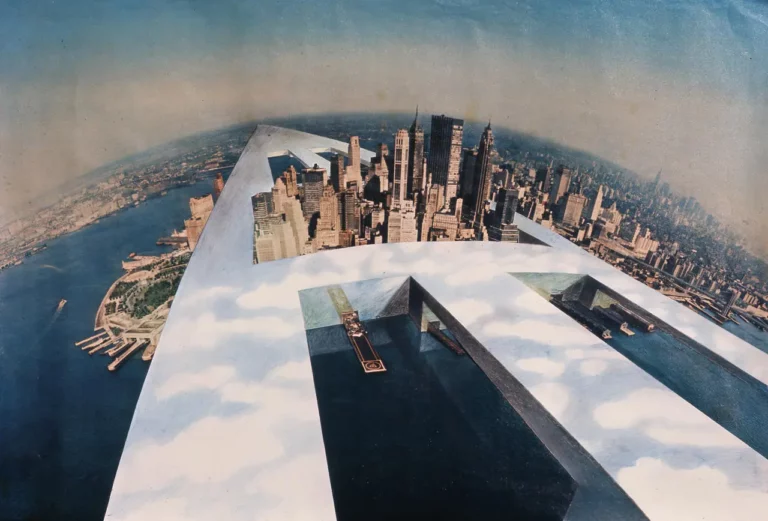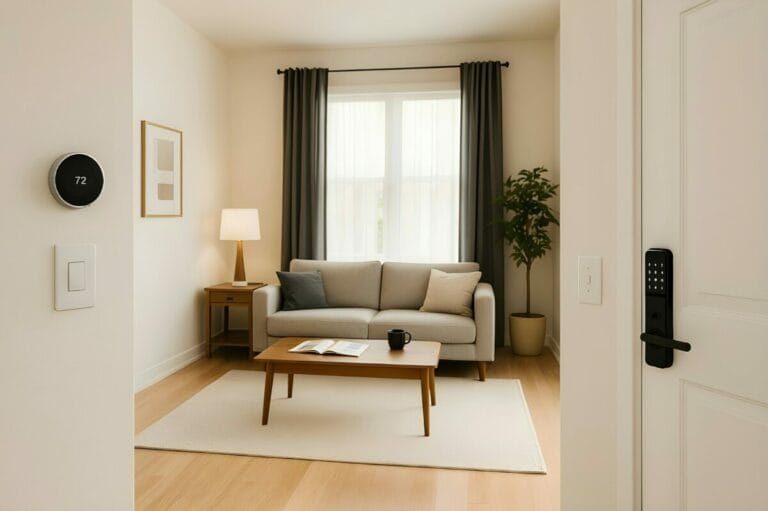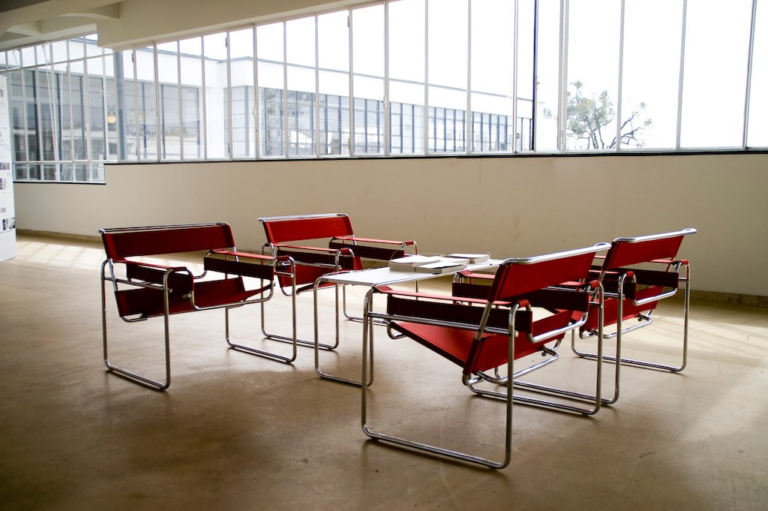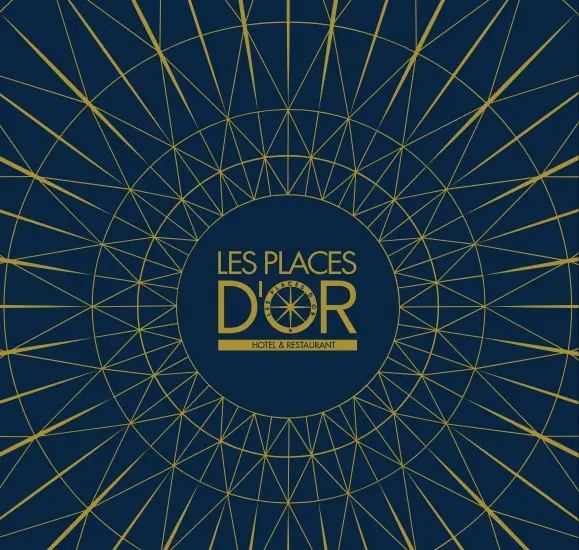When Matter Becomes Signature
The contemporary kitchen is no longer built on compromise. It asserts itself as a space of expression where every surface tells a story, where every material dialogues with everyday life without denying beauty. Over the decades, the household goods industry has dominated people’s minds with its standardization and uncluttered functionalism. However, over the past fifteen years or so, a reverse trend has been sweeping through Parisian mansions and apartments alike: an assertive return to noble materials. Carrara marble, Brazilian granite, the latest technical ceramics-these materials, which once demanded a fortune, are becoming (slightly) more democratic, while their prestige is asserting itself. But why? Because a marble kitchen never ages. It improves, takes on patina, becomes a witness to happy lives. This is precisely what discerning homeowners are looking for in 2025: timeless spaces that embody both discreet luxury and authenticity.
The Emergence of a New Classicism
The history of kitchen materials can be divided into two acts. Until the 1980s, natural stone dominated-not by choice but by necessity. Then came the era of Formica, coloured laminate and “practical” melamine worktops. Hygienism triumphed. Beauty remained a luxury.
Since the late 2000s, the pendulum has swung back. Northern Italy is rediscovering its marble deposits; Brazil is shipping its finest granite across the Atlantic; ceramic technology is progressing at an exponential rate. At the same time, an ecological awareness is emerging: preferring a durable material to a succession of cheap renovations is also becoming a question of ethics. Exceptional kitchens can no longer be bought; they can be inherited and passed on. They are investments.
This evolution is part of a broader context: the rejection of utilitarian minimalism in favor of a spatial humanism where material takes precedence over design. Influenced by Scandinavian interiors, Mediterranean villas and the Japanese heritage of mono no aware (the beauty of impermanence), contemporary designers are reinventing the kitchen as a space to be contemplated, not just used.
The Alphabet of Noble Materials
Noble materials share many aesthetic signatures.
Natural stone-whethermarble, granite or quartzite-imposes its veining as a geological tattoo. Each worktop is unique. Carrara marbles offer off-white, almost grayish tones, crossed by subtle blue-gray veins. Calacatta marbles rival each other in drama with their golden veins on a pure white background. Brazilian granites explode with color: deep blacks (Angola, Negro Absoluto), vibrant pinks (Rosa Palissandro), glittering caramels (Santa Cecilia).
Solid wood embodies warmth. Walnut, oak, chestnut, mahogany: each species creates its own chromatic palette. The grain, knots and gradual wear of wood in contact with humidity create a visual narrative that no varnish can mimic. Wood medicalizes space; it humanizes function.
Technical ceramics are the silent revolution. Large format (up to 320 × 160 cm), ultra-thin, they perfectly imitate natural stone while offering superior resistance. They accept scratches with grace, and resist extreme thermal shock (passage from cold to hot without cracking). Aesthetically: absolute material effect, slightly rough texture, polished or matte finish depending on desired effect.
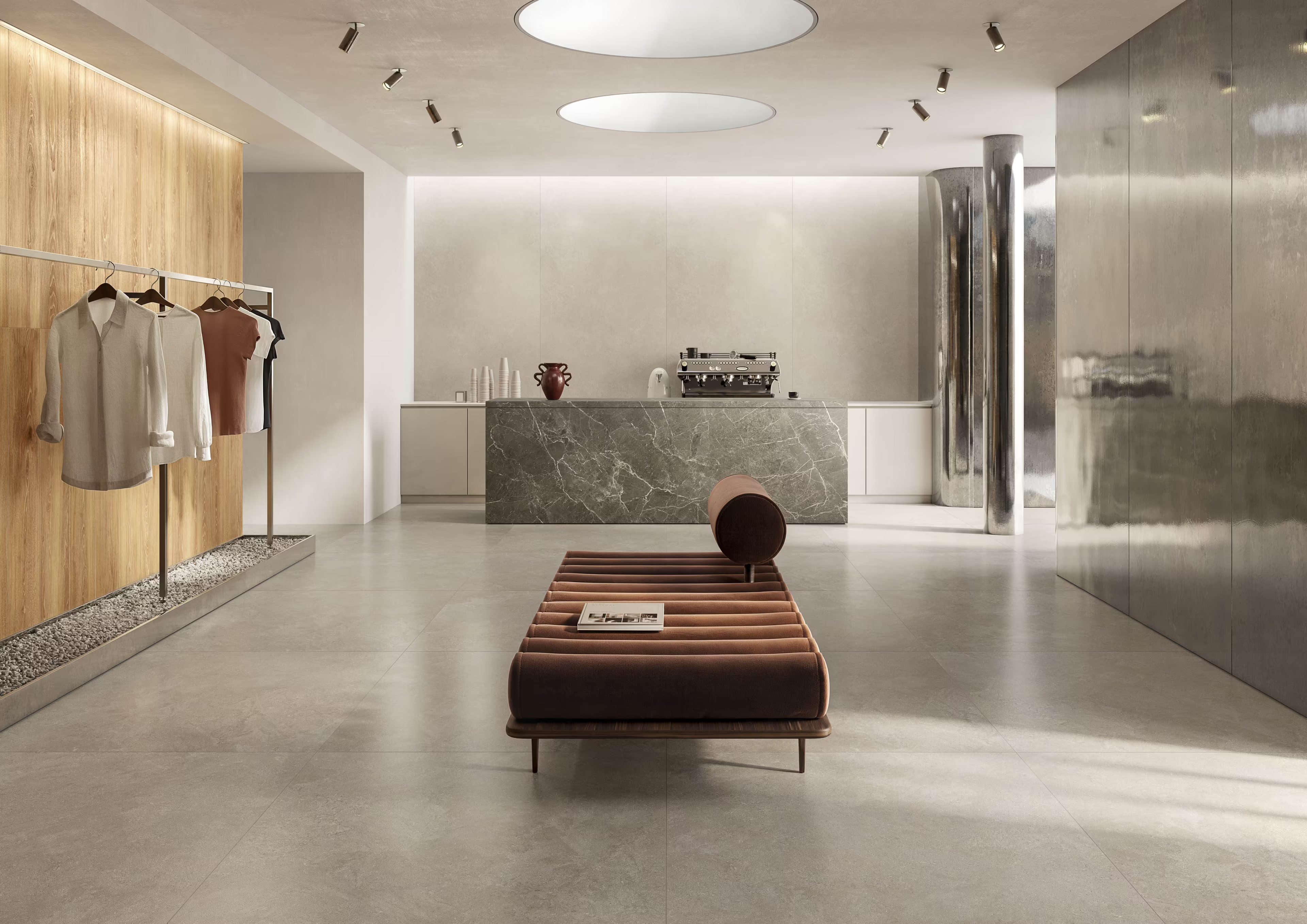
Patinated metals-brushedstainless steel, oxidized copper-play the role of accentuator. They introduce an industrial chic dimension, a memory of noise, effort and manufacturing authenticity.
Those Who Redefined Excellence
Tom Dixon and Materialist Philosophy
An essential British designer, Tom Dixon has revolutionized the perception of materials in the kitchen through radical experimentation. His raw concrete walls and solid brass countertops hide nothing; on the contrary, they proudly display their nature. Dixon sees every surface as an inhabited sculpture. His London studio, which has become a mecca for international design, embodies this fusion of art and function.
Patricia Urquiola: Ceramics as Poetry
Spanish architect and designer Patricia Urquiola has transformed technical ceramics into a material for artistic expression. Her collections for Mutina and Casalgrande Padana explore the infinite possibilities of large format, oscillating between abstraction and imitation of natural materials. She proves that technology, far from crushing the soul, can amplify it.
Carlo Scarpa: the Italian heritage of detail
Although he died in 1978, Carlo Scarpa continues to influence contemporary kitchens. This Venetian architect conceived of materials as dramatic characters: marble was not inert but reactive, changing its appearance according to the light. His principles of precise joins, deliberate joints and respect for the material still govern today’s most beautiful kitchens.
Luca Nichetto: Scandino-Italian flexibility
Swedish-Italian designer Luca Nichetto elegantly navigates between Nordic minimalism and Mediterranean sensuality. His creations for Barber & Osgerby blend precious woods and ceramics, creating visual balances of remarkable finesse.
Bartoli Design: the Archaeology of the Everyday
This Italian collective elevates the kitchen to the status of an anthropological object. Their works in raw marble, unpolished granite and forged steel invite the cook to engage in a dialogue with the material itself, its roughness and its history.
Witnesses to Sublimated Everyday Life
Salvatori worktops embody marbled purity. Founded in 1946 in Tuscany, Salvatori crafts solid Carrara surfaces, profiled with almost Swiss precision. Each worktop becomes an architectural object in its own right.
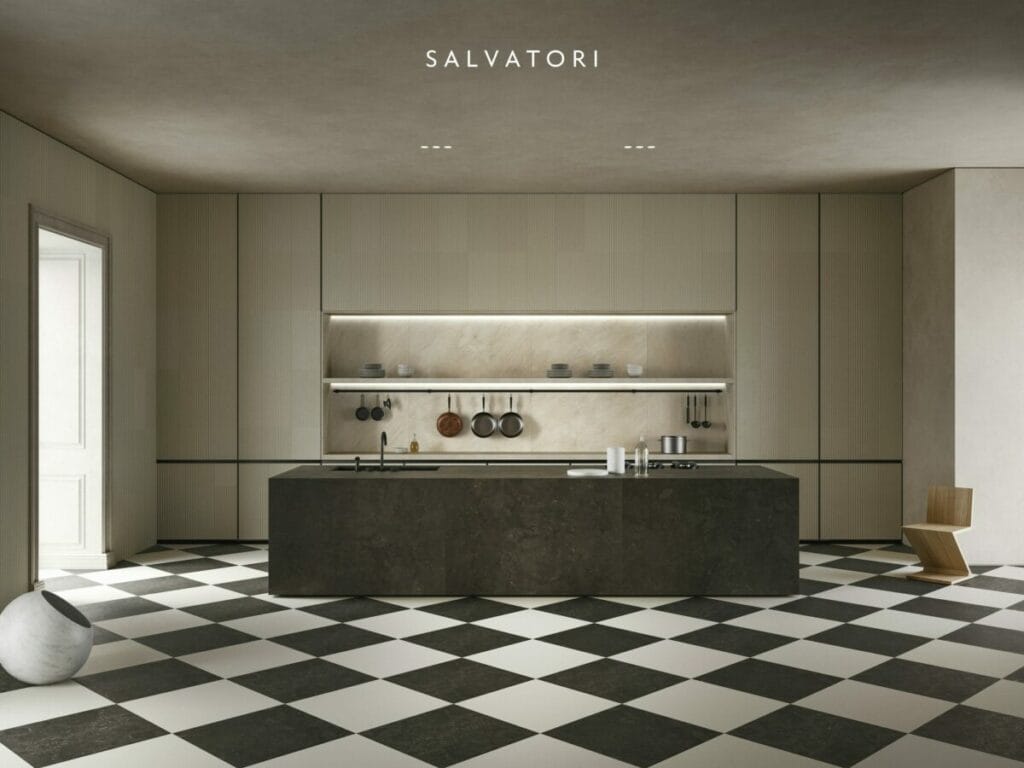
B&B Italia’s Calacatta marble tables are a reminder that the kitchen extends to the table. These pieces, designed by the world’s leading designers, transform raw material into habitable sculpture.
Large-format ceramic credenzas by Casalgrande Padana or Marazzi offer aesthetic flexibility and outstanding performance. These coverings withstand splashes, thermal shock and wear without degrading-while remaining as beautiful as the day they were installed.
Solid wood kitchens by Boffi or Salvarini combine precision joinery with living materials. Every door is a promise of durability, every handle the fruit of in-depth ergonomic studies.
Between permanence and reinvention
Noble materials in the kitchen are not nostalgia but continuum. Architects are currently revisiting the Italian 1970s: the Postmodernists sacralized the material. Today, mature minimalists are rehabilitating color, texture and heterogeneity. We’re seeing the emergence of kitchens combining white marble and black granite, light woods and dark steels. The post-Instagram era accepts imperfection, asymmetry and authentic materials.
Designers like Lissoni Capolino are rediscovering Scarpa’s principles, applying archaeological thinking to preparation areas. The result: kitchens that seem to have always existed, bearing the serene mark of time.
Investing in timelessness
Buying new: Expect to pay between €12,000 and €50,000 for a top-of-the-range kitchen in noble materials. Sculptors such as Salvatori sell their plans from €8,000. Boffi, Snaidero and Poliform offer ranges from €15,000 to €40,000. For technical ceramics, Casalgrande Padana and Mutina offer credenzas from €50 to €150/m².
Where to buy? The showrooms of the design capitals (Milan, Cologne, Benoît) are still a must. In France, official distributors Poliform, Boffi and Snaidero occupy the premium districts (Marais, Rive Gauche, Saint-Germain-des-Prés). Online, specialized boutiques such as Roche Bobois and Ligne Roset offer reliability and selection.
Second-hand: Second-hand markets are a treasure trove. A solid wood kitchen from the 1980s can be bought for €2,000 to €5,000. Visit antique dealers’ flea markets and recent sales sites (Leboncoin, Selency, Pamono). Vintage Boffi pieces find buyers at 30-40% of the new price.
Eternity in Detail
A kitchen made of noble materials is not a whim; it’s a philosophy. It affirms that everyday life deserves beauty, that use does not exclude emotion. Marble ages nobly. Wood strengthens with patina. Technical ceramics trace the story of each cooked dish without faltering.
This dense universe is the logical successor to the utilitarian minimalism of the past two decades. It already anticipates the next wave: that of radical customization, high-performance bio-materials and material intelligence.
Investing in a beautiful kitchen means choosing to live slowly in your own home. It’s about recognizing that design is not about adornment, but respect.
Explore our full feature on high-end kitchens and exceptional materials on HART Design Selection

Independent interior architect and project manager, I combine technical expertise with aesthetic sensibility. From structural work to finishing touches, I have developed an in-depth knowledge of materials, which I share through writing to convey my passion for design and architecture.

